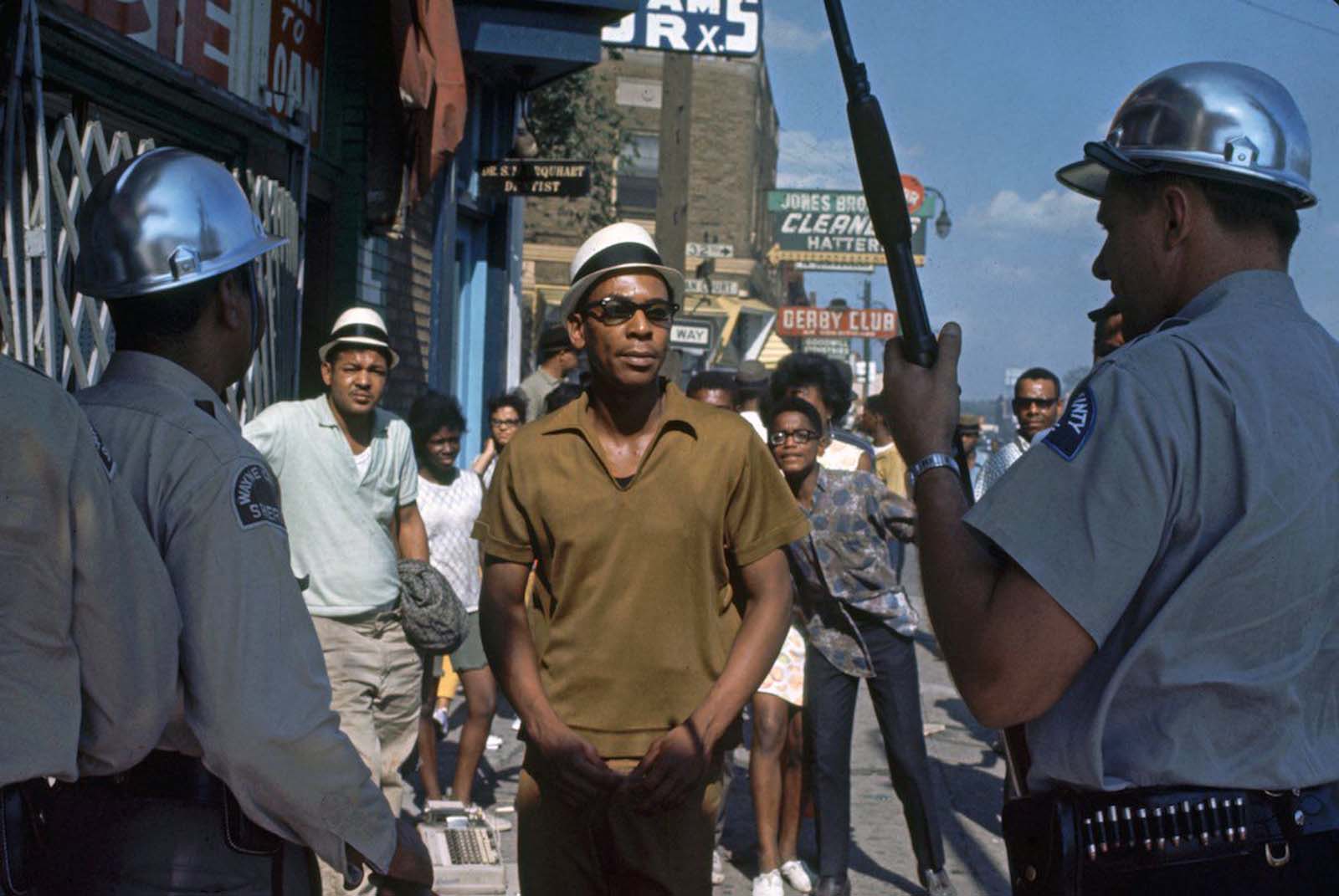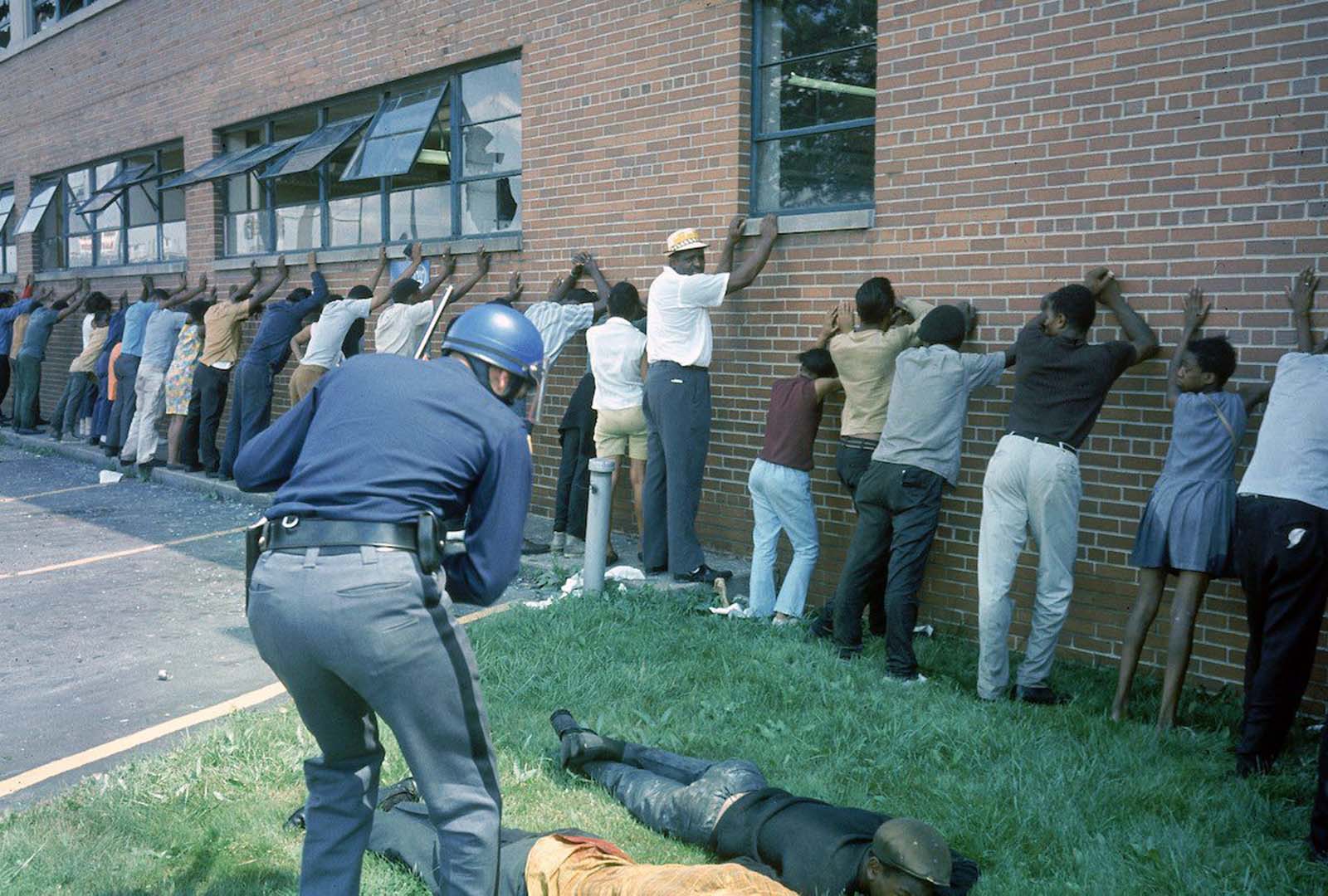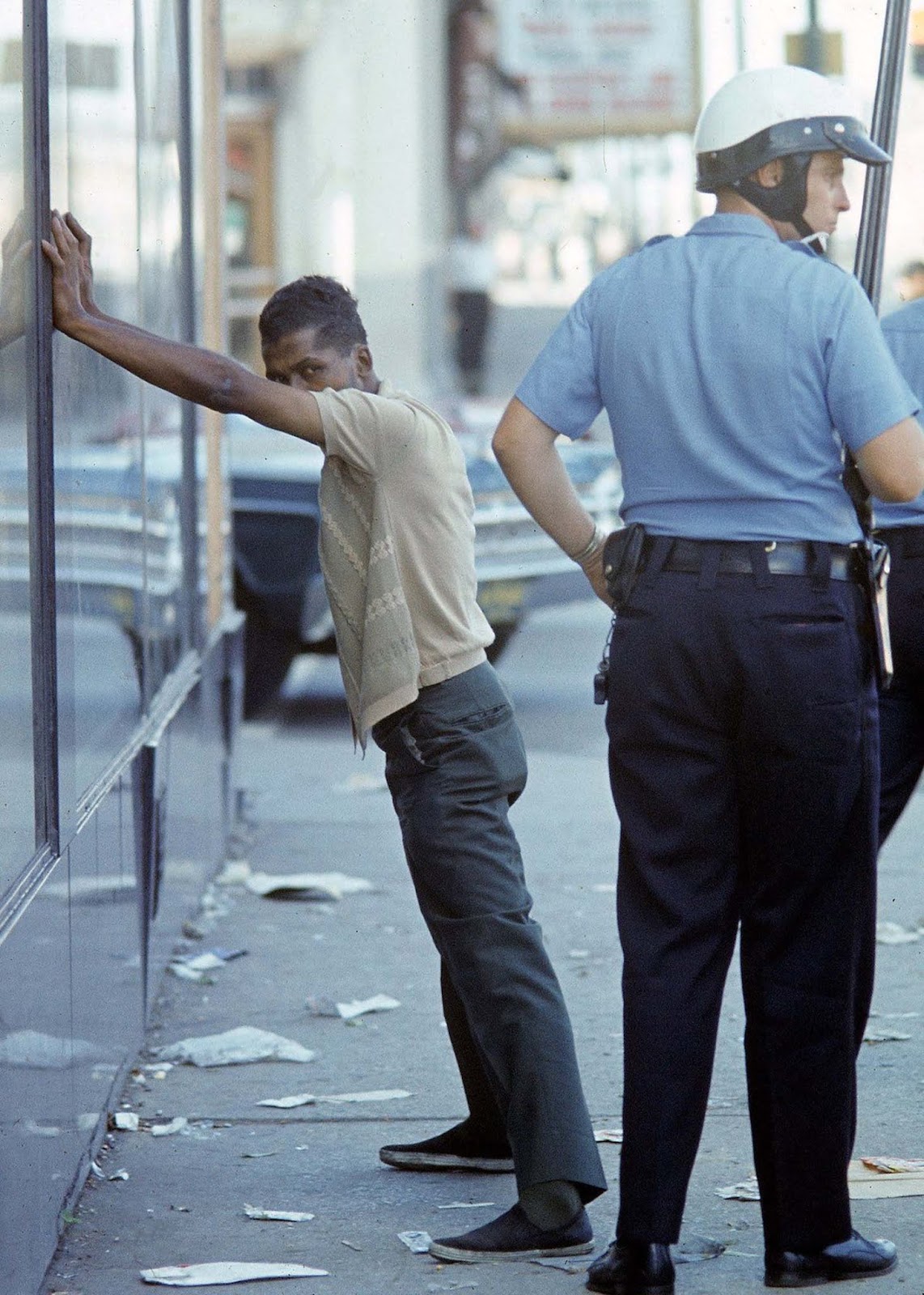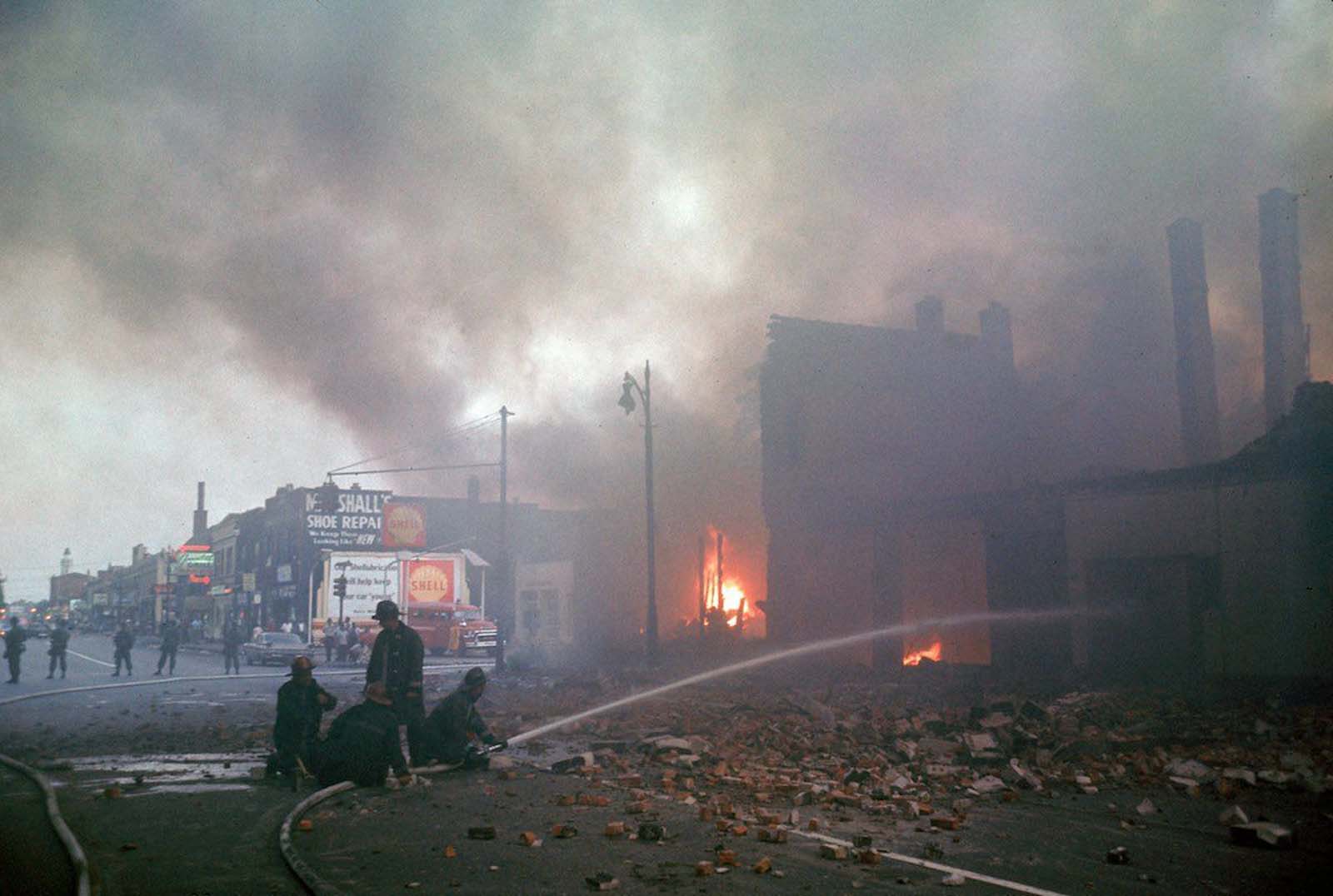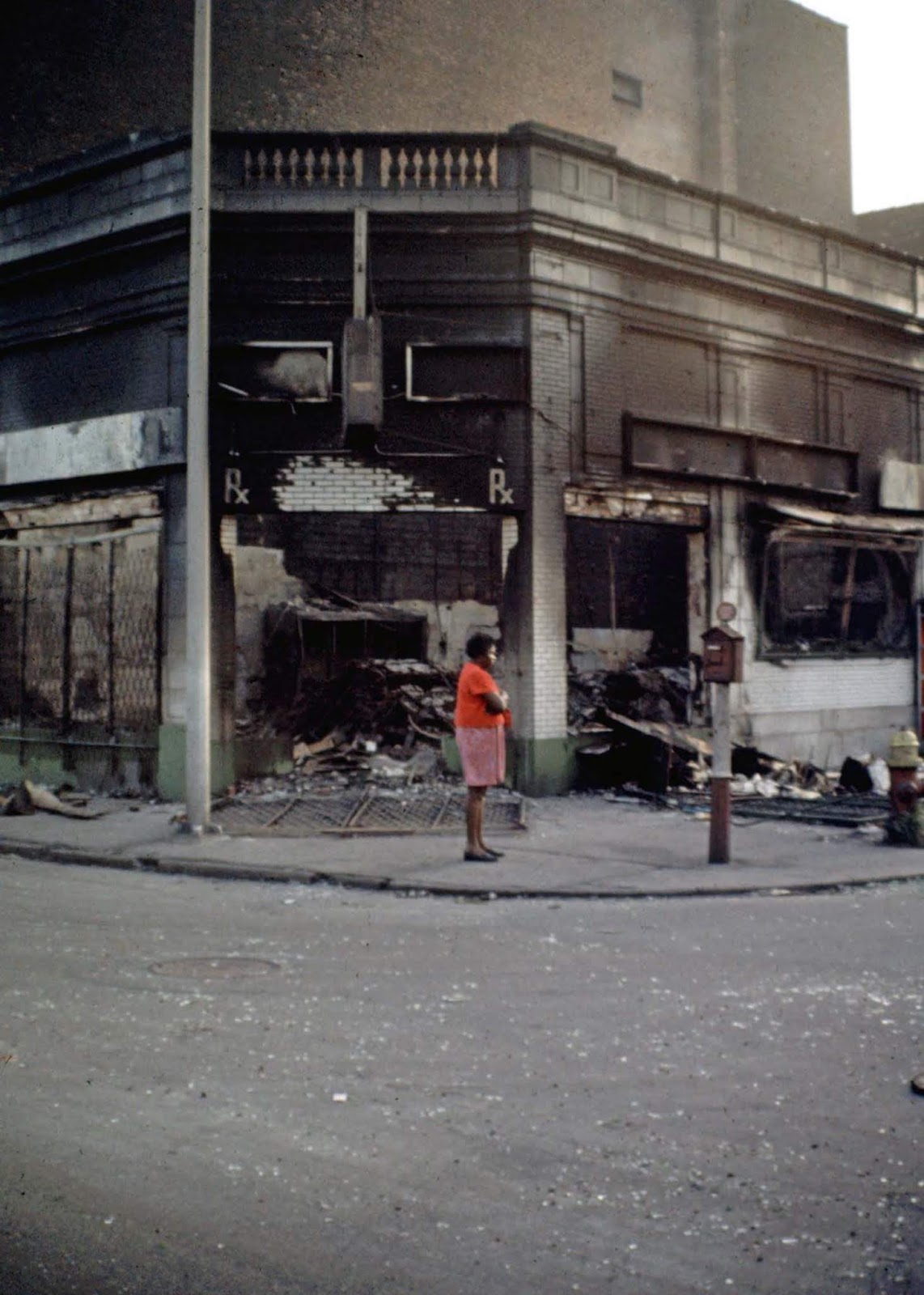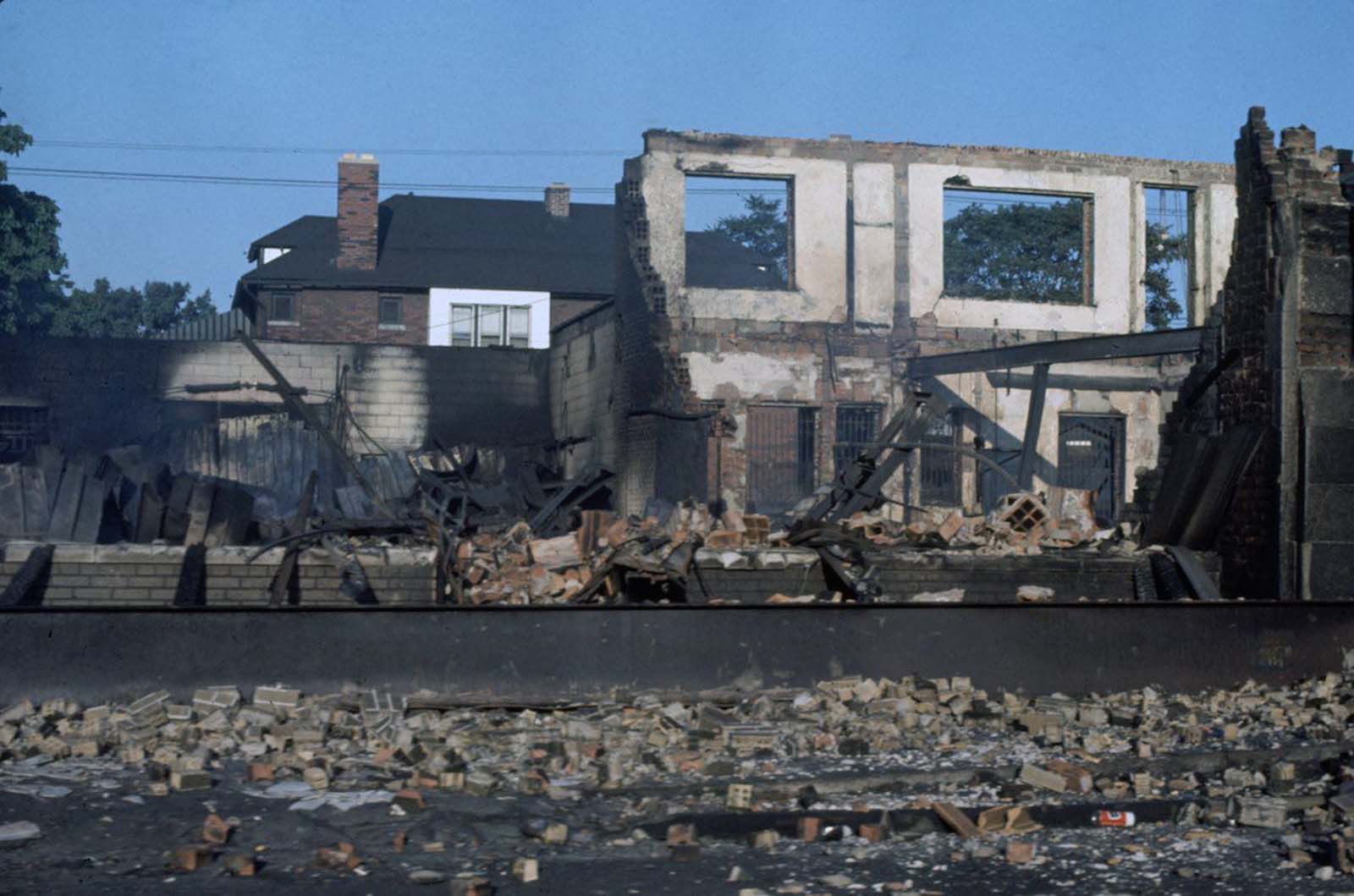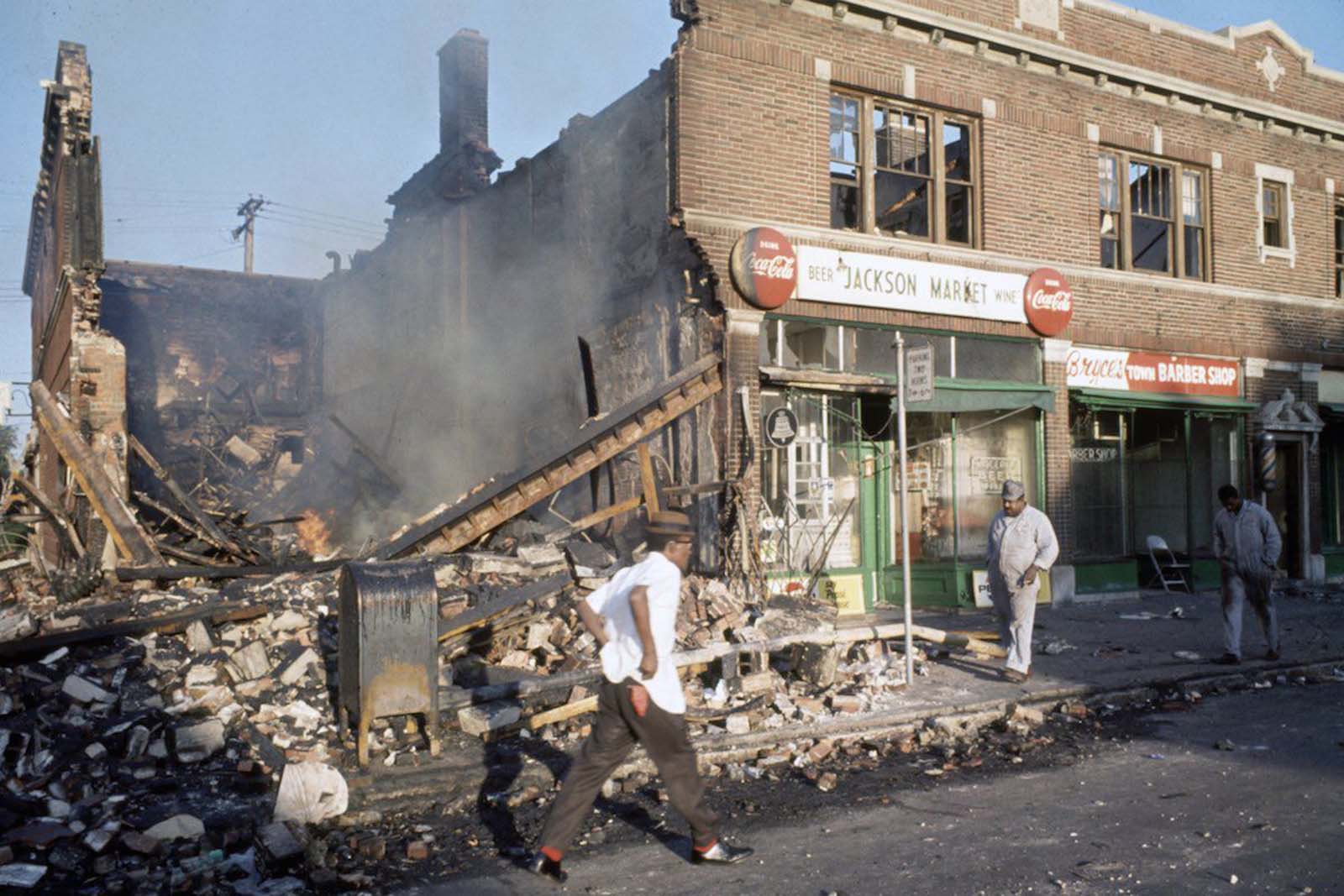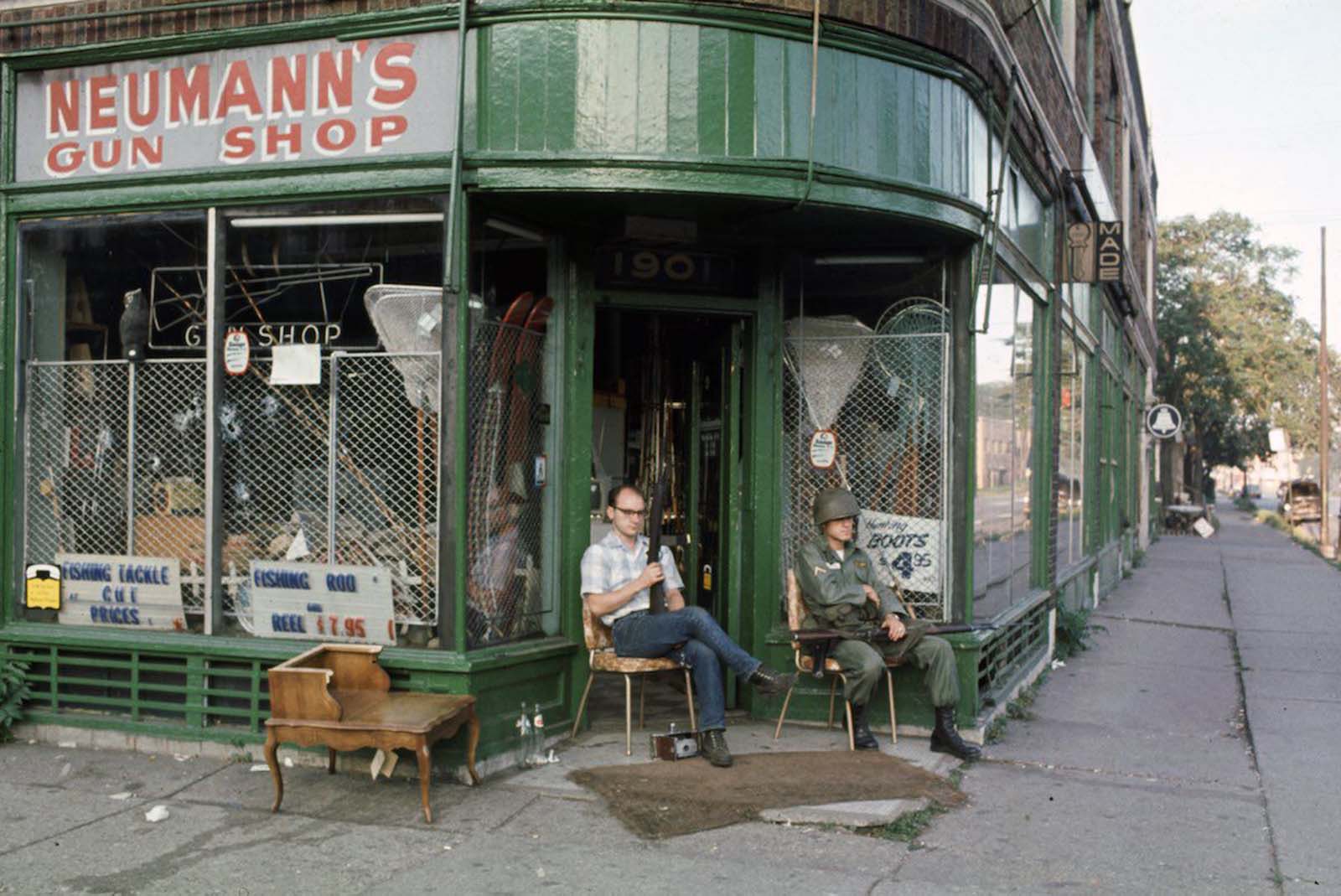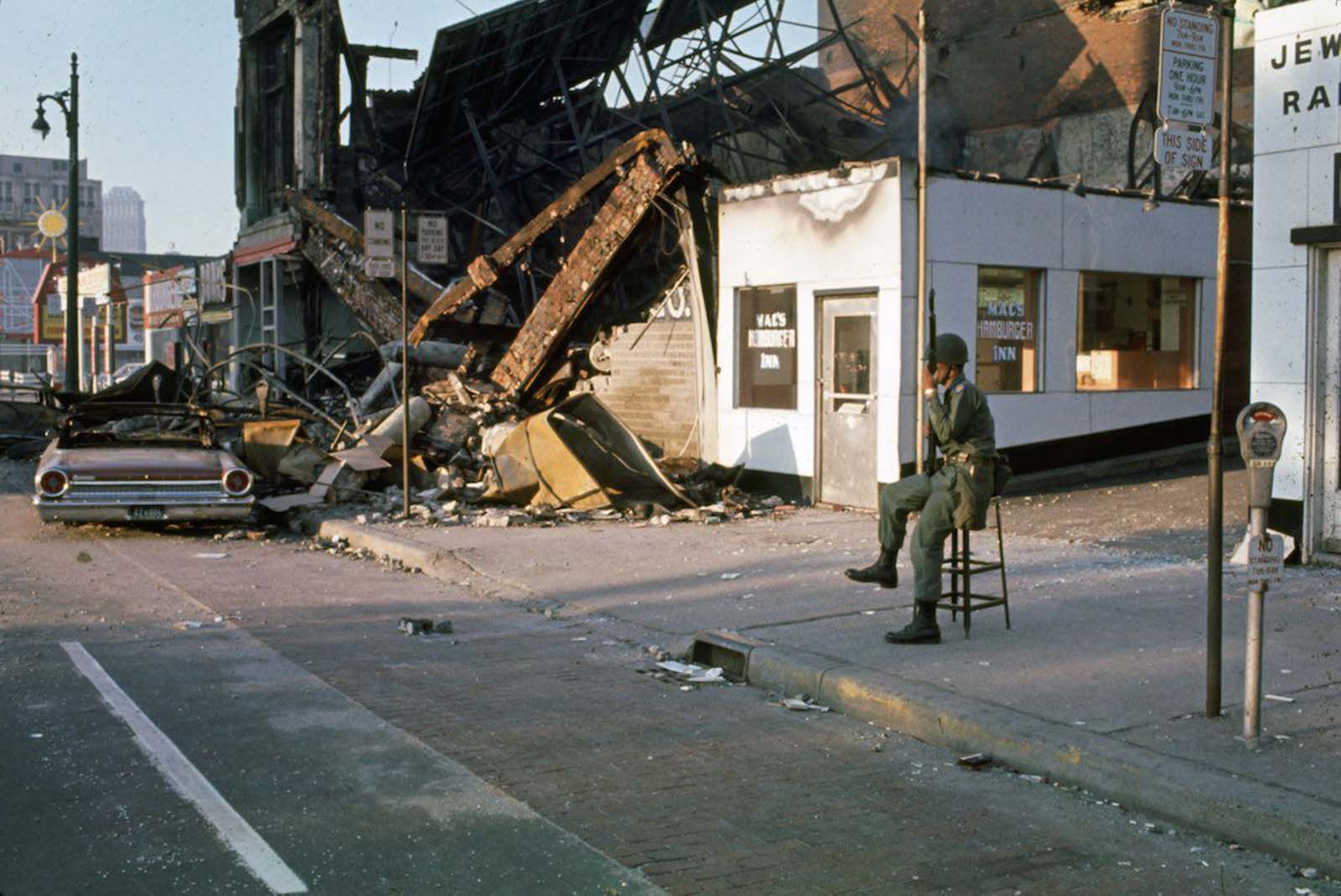For five straight days rioting and looting enveloped the city, prompting President Lyndon B. Johnson to mobilize the National Guard. When the smoke cleared, 43 people were dead and over 1,000 more were injured. In total, over 7,000 people were arrested and over 2,000 buildings destroyed. The Detroit police force was overwhelmed. Officers made so many arrests that they had to hold detainees in makeshift jails. Many of those arrested were among the estimated 100,000 spectators watching the 10,000 rioters. On Monday, July 24, at the height of the riot, 231 incidents were reported every hour. Shortly before midnight that day, President Johnson deployed federal troops — even tanks — in an attempt to restore order. In the meantime, the spark of the Detroit riot led to rioting in other cities: Flint, Grand Rapids, Pontiac, Saginaw and Toledo. It would be a further 48 hours after troops arrived before Detroit was finally under control. Before the riot, public perception had deemed Detroit a thriving, peaceful community with a rising middle class and ambitious redevelopment projects. Ironically, the city had earned accolades as the “model for police-community relations.” However, experts claim Detroit’s rising black population was dissatisfied with persisting segregation and issues of discrimination, particularly in policing, before the riots. The 1967 Detroit riot remains one of the deadliest riots in American history. (Photo credit: Howard Bingham / Time & Life Pictures / Getty Images). Notify me of new posts by email.
Δ Subscribe




